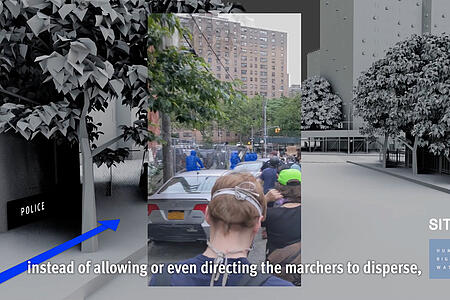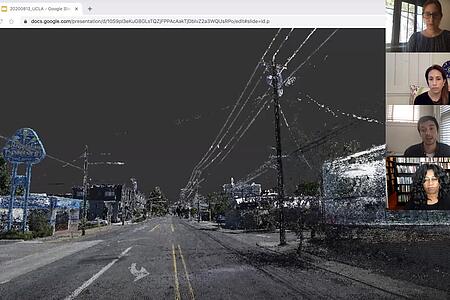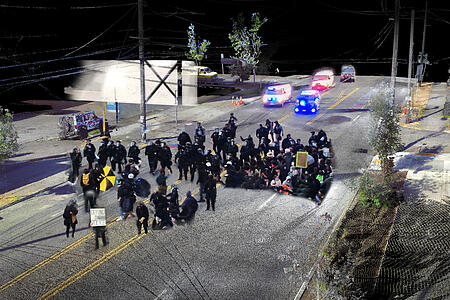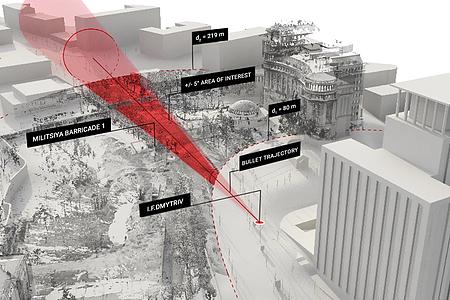Documenting NYPD's suppression of peaceful protest in the Bronx
A video reconstruction analyzing police tactics against peaceful protesters in the Bronx
Approximately 300 people assembled in the Mott Haven neighborhood of the South Bronx on June 4, 2020 to protest police violence and systemic racism. The demonstrators marched peacefully until their action was forcefully ended by the New York Police Department (NYPD) at the intersection of 136th Street and Brooke Avenue. We collaborated with Human Rights Watch to examine the relationship between the protest, the City’s 8 p.m. curfew and the frequently-used police tactic of “kettling,” which was deployed to trap and then arrest protesters.
Working with over a hundred citizen videos, our team analyzed this footage to render visible the complex chain of events that culminated in the NYPD’s violent crackdown. The videos were placed within a digital model of the neighborhood to analyze interactions between the protesters and police in both time and space. The picture that emerged reveals how the police used the built environment to steer, constrain and trap the protesters, thus manufacturing the conditions that resulted in 60 protester injuries and 263 arrests.
Our methodology consisted of assembling a digital twin of the event, which we could then analyze to answer questions central to the report. First, we modeled the site using Rhinoceros 3D, using coarse photogrammetric data as virtual scaffold. We then incorporated key pieces of footage within the site model, recreating the position and movement of the camera throughout the duration of the video. Finally, we synchronized the footage in time using distinct visual and audio features shared across different files, such as flashing lights and chants—a process that was then corroborated by metadata where available. Such precisely located and synchronized footage created windows of multi-dimensional information through which we could evaluate, document, and diagram the second-by-second movement of the protesters and police officers.
The granular reconstruction of this event makes clear that the issuance of a city-wide curfew combined with a strategic effort to neutralize this public assembly led to an unnecessarily violent and repressive result, setting a dangerous precedent for controlling the right to assemble and protest in New York City and beyond.
The video and a much longer report created by Human Rights Watch were released to the public at a news conference on September 30, 2020. The conference provided an in-depth explanation of the report’s methodology and NYPD’s response so far. Protester Andom Ghebreghiorgis also testified first hand about his experience during the protest on June 4th.
This particularly fraught political moment, characterized by narratives of public chaos from all levels of government, makes the work of investigating, documenting and sharing the repression of dissent that much more important. This investigation is part of a larger body of work by SITU Research, focusing on the abuse of power and public assembly— see our Euromaidan Reconstruction project—with ongoing investigations around the country in both advocacy and legal contexts.
In the days following the release, the project was covered by a range of news outlets, including in TIME Magazine, Fast Company, The Gothamist, The Intercept, New York Daily News, New York Post, NY1, and more. And on Friday, October 2, Mayor Bill de Blasio faced questions about the report on the Brian Lehrer show.







